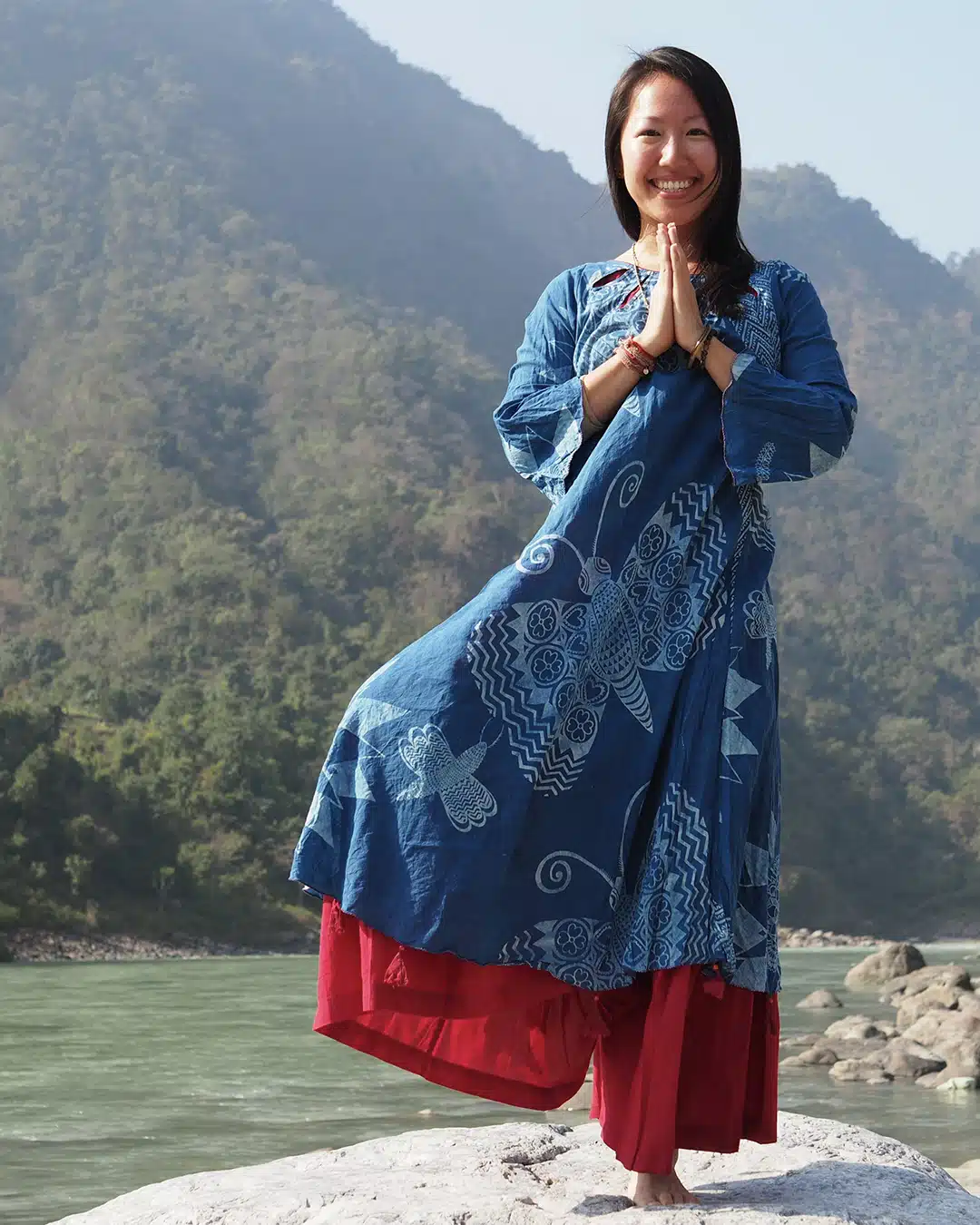“What is the difference between mindfulness and meditation?”
This is a question I hear often. Recently, a wellness platform reached out with this question, and the answer makes a distinct case for Vedic Meditation. The technique I teach supports a mindfulness practice and may even make it easier to practice mindfulness.
First, let’s start with the definitions of both mindfulness and meditation, and then discuss key differences between the two.
What is mindfulness?
Mindfulness is a state of awareness where one is fully present in the here and now.
It is a practice of drawing one’s attention back to the present moment, like training your attention to stop wandering and instead focus on what is happening (internally and externally) right this moment.
Sometimes it’s easiest to understand what mindfulness is by first describing what “non-mindfulness” can feel like.
Here are some examples of “non-mindfulness”:
- “I’m constantly speculating and worrying about the future or reviewing/regretting the past.”
- “My mind is somewhere else.”
- “I can’t seem to focus on the task at hand.”
- “I’m having a conversation with someone, but my mind has wandered, thinking about worries or anticipations.”
- “I don’t really have a sense of where I am. I am living in my own thoughts and concerns.”
In contrast, a life lived in pure mindfulness feels like:
- “My mind is grounded in the present.”
- “I can place my mind and attention to anything that’s placed before me.”
- “I’m in conversation with someone and fully engaged in what they’re sharing with me.”
- “My five senses are totally dialed into my environment. I am fully aware of where I am and what I am here for.”
If you can imagine a conversation you’ve had that barely kept your attention, you’ve experienced non-mindfulness. Not that non-mindfulness is bad – it’s very normal. Our minds wander while we’re driving, while we’re in the shower, while we do the dishes, and sometimes in moments where it would serve us much better to be fully present.
By contrast, if you take a moment right now to feel your breathing and notice the feel of your clothes… you’re practicing mindfulness.

What can mindfulness provide?
In a mindful state of awareness, we are tuned into all of the information that the five senses are offering to us at any given moment. What am I seeing? What am I tasting? What am I hearing? What do I smell? What are the tactile sensations I’m feeling? We’re truly present in the here and now.
For many people, especially athletes, they will call this experience of being in the “flow state.” It feels energizing, refreshing, and expansive.
For most, 24/7 mindfulness isn’t easily achieved (or an easily repeatable experience) because the mind is overrun by stress-born patterns of thinking that make present-moment awareness challenging to sustain for longer periods of time.
What is meditation?
Meditation is defined as an eyes-closed experience that can bring the mind to enough stillness to be able to experience mindfulness as an awareness state.
First, inside meditation, mindfulness is cultivated, and with enough experience of being grounded in the present inside meditation, mindfulness becomes a baseline experience of life outside of meditation.

Vedic Meditation: the oldest form of meditation
Vedic Meditation is a 5,000+-year-old meditation technique originating in Bharat (India). One uses a personalized mantra, or sound, and repeats it silently inside meditation to bring the mind to a quiet, thought-free state of deep rest. In this state of deep rest, the meditator enjoys an experience of pure mindfulness while also purifying the physiology of stress.
With large amounts of stress released during a Vedic Meditation sitting, one finds it easy and natural to be mindful and present in everyday life outside of meditation.
Vedic Meditation is the most powerful style of meditation – and the easiest to learn and stick to. It is a twice daily 20-minute practice that is very relaxing, as thoughts are allowed and no concentration is required. It allows the meditator to experience unprecedented levels of present-moment awareness within days of learning and practicing.
With a rested body and less stress affecting our attention and thoughts, the twice-daily Vedic meditator has an easier time being present as a regular, steady state.
How can you practice mindfulness in your daily life?
I have three tips that will help you develop your mindfulness and practice it throughout your day:
Tip #1: Stay Rested
One of the biggest blockers to the flow state of mindfulness is a tired mind and body. Fatigue overwhelms the senses and overtakes our state of awareness. Make sure you don’t ignore the first signs of tiredness and address them as soon as you can.
Tip #2: Practice “Come to Your Senses’
This is a short exercise that can be done anywhere, anytime.
Whenever you feel disconnected from the present moment, you can quietly ask yourself these questions:
What am I seeing?
What am I hearing?
What am I tasting?
What am I touching?
What am I smelling?
Don’t rush through this practice – it should take at least 3-5 minutes to complete and is a powerful practice that can get you reconnected to the present.
Tip #3: Start Meditating
Meditation is an essential part of cultivating a stress-free physiology that allows for mindfulness to be a baseline experience in life (i.e. Mindfulness without even trying).
How to Start a Meditation Practice
It’s important to make an informed choice about what kind of meditation practice to start, as any practice has the most beneficial effect when you are consistent with it every day. Here are three tips to start a meditation practice you can stick with:
Tip #1: Explore different types of meditation
One of the most important things about meditation is that you have to enjoy it enough to do it every day. For us to enjoy it, we have to find a style of meditation that we actually like doing!
The two questions to ask are: 1) Is the meditation practice itself pleasant and enjoyable? 2) Do I feel better after having meditated?
Once you find a style of meditation where you answer “yes” to both, then you’ll have built the foundation for a solid daily practice.
Tip #2: Explore one type of meditation at a time
Blending meditation techniques has the unintended effect of diluting all the techniques, so it’s best to identify one that feels most interesting to you and give it a go.
Tip #3: Stick to it for 4-6 weeks
Just like exercise, we don’t expect to see results overnight. Give whatever technique you’re trying out a fair shake, and then evaluate if it’s making a positive impact on your life.

Learn Vedic Meditation
If you’d like to be more present throughout your day, the best place to start is to learn Vedic Meditaiton from a qualified instructor. I teach the Learn to Meditate course over four days of 90-minute sessions, where you’ll learn how the technique works and receive a mantra of your own.
To learn more about it, schedule an intro call with me here or email me at susan@meditatewithsusan.com.







